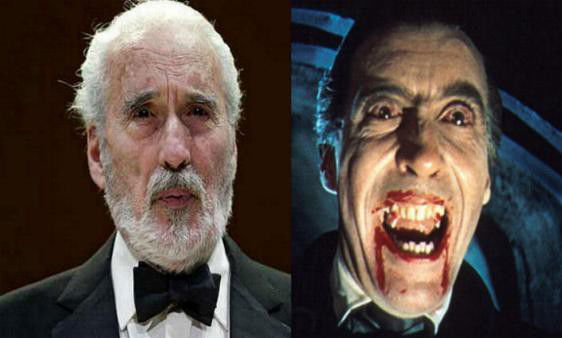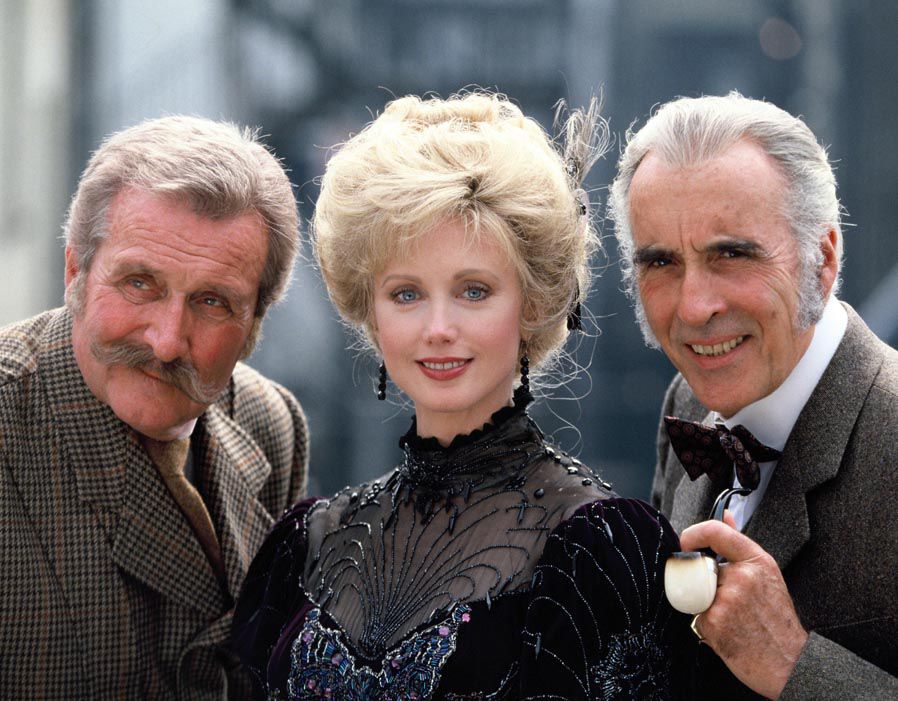America
Not always evil, Christopher Lee as a good man onscreen
By
By Vikas Datta
New Delhi, June 13
To people too young to have
seen Bela Lugosi in the role of the evil Transylvanian count,
Christopher Lee was Dracula personified - playing the character over
half-a-dozen times. His other famous roles were no less malignant -
including Frankenstein's Monster, Dr Jekyll and his sinister alter ego
Mr Hyde, Fu Manchu, Rasputin, Scaramanga - a master assassin who intends
to kill James Bond - and the Devil. But the accomplished actor could
occasionally also be seen battling evil.
Lee, who died on Sunday
but whose demise was announced only on Thursday, was most identified
with Dracula, as he played the character in seven of the nine films of
the series produced by the Hammer Film Company, from "Dracula" (1958) to
"The Satanic Rites of Dracula" (1973) as well as two German films, Lee,
who with his piercing eyes, saturnine looks, and wolfish grin did not
need to be made up to look sinister, resisted getting typecast.
At
the same time he was appearing as Dracula, he played one of his most
famous roles, though largely forgotten now, where he combated evil,
instead of spreading it. This was in "The Devil Rides Out" (1967), based
on best-selling British author Dennis Wheatley's eponymous 1934 novel
about a band of friends determined to save one of their number from
getting embroiled in Satanic rituals.
Lee, who introduced
Wheatley - with whom he shared experience of intelligence work in the
Second World War - to Hammer, played the role of the Duc le Richelieu,
an elderly, worldly-wise Frenchman settled in London, with a good
knowledge of fighting occult evil. One of Hammer's most famous films, it
also starred Charles Grey (familiar to Bond fans as Dikko Henderson of
"You Only Live Twice" and Blofeld of "Diamonds are Forever") as the
villain Mocata, while one of Richelieu's young friends was Paul
Eddington, who would go on to be famous as Jim Hacker of "Yes Minister"
and "Yes, Prime Minister".
Hammer adapted another Wheatley novel
"To the Devil a Daughter", but here, production difficulties made the
author disassociate himself and the film plot has little in common with
the book. Lee, however, was again the villain, playing the
excommunicated, heretical Father Rayner, who is determined to get a
young girl (Nastassja Kinski) for a powerful Satanic ritual.
Lee's next positive role was of another iconic literary character famous for battling crime - Sherlock Holmes, no less!
This
was not Lee's first brush with the master detective of Baker Street,
having played Sir Henry Baskerville to his long-time co-actor and close
friend Peter Cushing's Holmes in a 1959 remake of the "Hound of the
Baskervilles". But in two TV films, he gave Holmes a new interpretation
as an elderly detective on the verge of retirement but with no loss of
mental acuity.
"Sherlock Holmes and the Leading Lady" (1991)
deals with him asked to foil a plot to assassinate the Austro-Hungarian
Emperor and thus spark a European conflict, while "The Incident at
Victoria Falls" (1992), set in South Africa and then Rhodesia, is about
Holmes entrusted with escorting a priceless diamond from Cape Town to
London - and recovering it when it gets stolen. Both draw in various
historical characters, including Dr. Sigmund Freud in the first, and
ex-US president Theodore Roosevelt in the other.
But Lee despite all his evil roles had a human side too.
Sammy
Davis Jr., of once the Frank Sinatra-led Ratpack, who acted with Lee in
TV comedy film "Poor Devil" (1973), recites in his autobiography
"Hollywood in a Suitcase" how he once frightened Lee senseless by
suddenly flashing a set of fake fangs at him.
"Never do that again to me," appealed the Dracula of the silver screen, recalled Davis.
(Vikas Datta can be contacted at vikas.d@ians.
































